#Milwaukee Road
Text

Milwaukee Road EP-2 Bipolar at Seattle Union station
#electric#Freight passing#passenger train#milwaukee road#bipolar Electric#electric traction#electric train#electrified railroads#seattle#Train of the day
172 notes
·
View notes
Text

CMStP&P train, engine number 4, engine type 4-4-2
Passenger; 7 cars. Photographed: south of Deerfield, Ill., June 21, 1946.
83 notes
·
View notes
Text
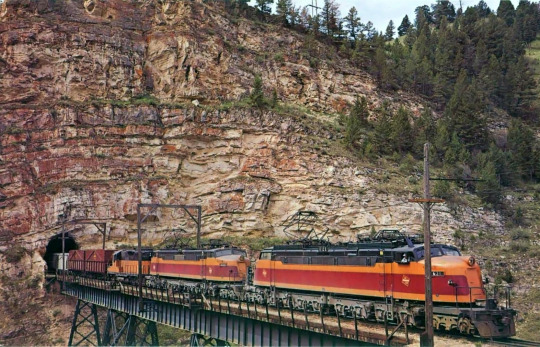
#Milwaukee Road#Little Joes#E-21#E-77#trains#railroad#trainspotting#Montana#Eagle Nest Tunnel#Sixteen Mile Creek#1962
125 notes
·
View notes
Note
do you want to be friends?
also you should turn off anonymous asks
Yes :3



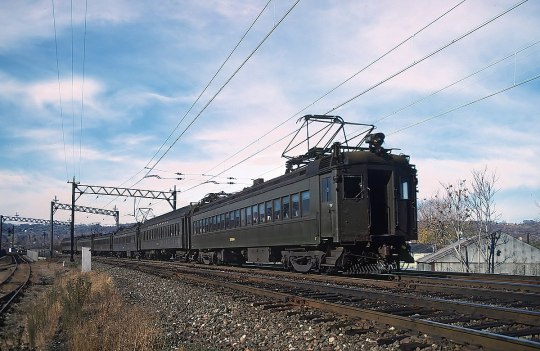

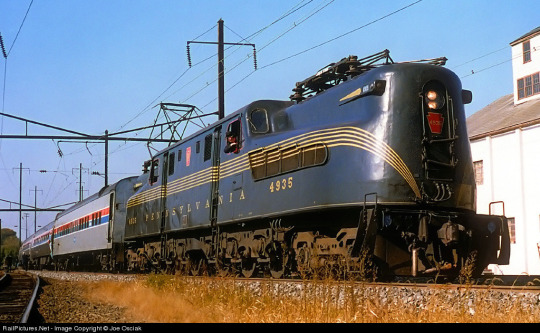
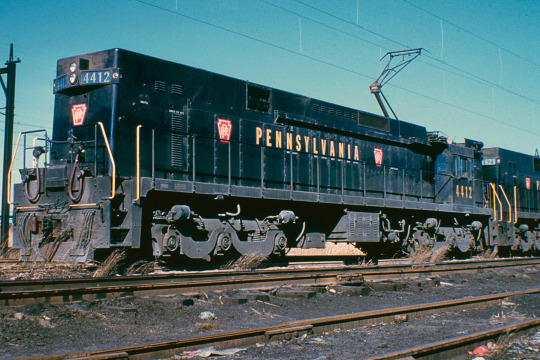
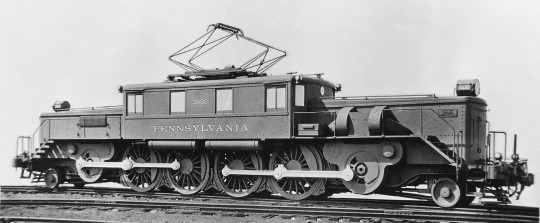
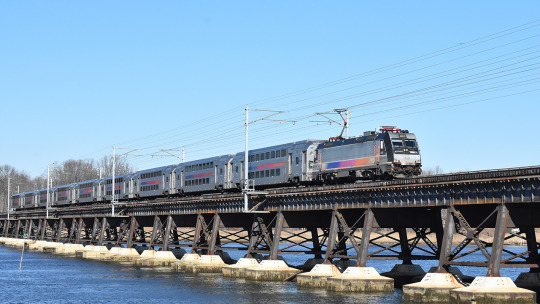

#trainposting#amtrak#electric traction#pennsylvania railroad#milwaukee road#canadian pacific#nj transit
30 notes
·
View notes
Text

A couple viewing the new Milwaukee Road Skytop lounge car. Minneapolis Minnesota. May, 1948.
15 notes
·
View notes
Text
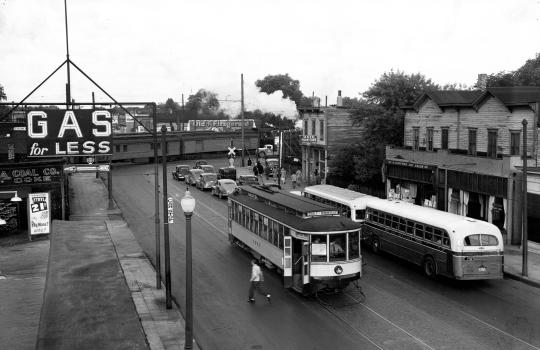
Getting around Town...One Way or Another
This photo from the 1940s highlights so many of the transportation options in mid-twentieth century Minneapolis -- and also some of the challenges they posed. Streetcars (visible in the foreground) were still at the center of the Twin Cities transit system as they had been for nearly 50 years. The streetcars' days were numbered, however. Buses (like the ones just next to the streetcar) ran concurrently with the streetcars and would completely replace them by 1954. Buses made more sense on streets increasingly dominated by cars (like the ones in front of the buses in the photo). With the growth of suburbs and the promise of "gas for less," cars became more and more popular. Not to be forgotten, trains (like the Milwaukee Road cars at the back of this photo) remained an important means of moving people and goods in and out of town.
When all these modes of transit came together at one intersection, it could be a problem. The intersection in this photo, Franklin Ave. and Cedar Ave., was completely rebuilt not long after this photo was taken in a massive Franklin-Cedar Grade Separation Project.
#minneapolis#minnesota#transportation#streetcar#trolley#buses#trains#milwaukee road#1940s#public transit
29 notes
·
View notes
Text

1943 America's Roads to Victory are boulevards of steel and stamina. The Milwaukee Road
Source: nevsepic.com.ua
Published at: https://propadv.com/railroad-poster-and-ad-collection/milwaukee-road-poster-and-ad-collection/
21 notes
·
View notes
Text

Short model railroad update: I got the locomotives for the Olympian Hiawatha! An FP7A, F7B and another FP7A of the Milwaukee railroad
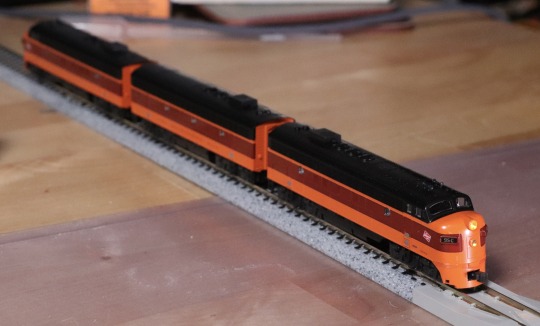
Going ABA instead of just two units does look nicer, doesn't it? I've fitted them all with DCC, using a PD10MU decoder, a basic thing for soldering in.
I've tried the Digitrax plug-and-play decoders before for other F units, and I've always been less than impressed. They're relatively expensive (two Digitrax ones would have cost more than the three I picked), not really that much less work, and I always felt like they're not super great with dirty rails. Of course in an ideal world Kato would just put a standard decoder plug in these things, but I'm not holding my breath. Instead I'm holding my soldering iron.
As for speed matching, that has not been a problem, since all three have the same decoder. And the long passenger train with the long train of locomotives in front looks really nice. The passenger train also has lights in now, but no pictures because, well, I couldn't be bothered. Maybe I'll make another post explaining the reason why I couldn't be bothered. It's to do with yet another train.
#model train#model railroad#model trains#model railroads#milwaukee#Milwaukee road#milw#emd fp7#kato#unitrack
4 notes
·
View notes
Text

Here’s yet another new profile of mine, where I’m wearing an orange’’red cap with the Milwaukee Road logo on it and a shirt that’s half light green and half dark green on the top half with the Northern Pacific logo on it, and the shirt’s bottom half is half empire builder orange and half empire builder brown. This setup is a reference to the fact that Milwaukee Road’s Olympian Hiawatha streamliner competed against Northern Pacific’s North Coast Limited streamliner and Great Northern’s Empire Builder streamliner over the routes between Chicago and the northwest.
#my oc character#my oc art#milwaukee road#northern pacific#great northern#olympian hiawatha#north coast limited#empire builder#streamliner
4 notes
·
View notes
Video
The SOO Line Copper Country Limited -- Roger Puta Photos por Marty Bernard
Por Flickr:
SOO Line Train 2, The Copper Country Limited, waiting for departure at Calumet, MI on January 7, 1967. The Copper Country Limited was for the most part a Milwaukee Road train, handled north of Champion, MI by the SOO Line. As you can see it was all Milwaukee Road equipment.
2 notes
·
View notes
Text

"Metra's Milwaukee Road heritage unit leads the Pullman special North through Chicago, IL."
May 15, 2022
Photo by Robby Gragg
#trains#railroad#railroads#illinois#rails#rail#rr#track#train#tracks#Chicago#Metra#Milwaukee Road#milw#trainspotting#urban#skyline#locomotive#diesel locomotive#heritage unit#sears tower
83 notes
·
View notes
Photo

Crew Change,
Marmarth, North Dakota
1974
14 notes
·
View notes
Text

CMStP&P locomotive, engine number 5801, engine type Whitcomb 90- Ton
Photographed: Chicago, Ill., September 26, 1935.
63 notes
·
View notes
Photo

Illinois Central 4003 (E6A) is on Train #21, the Governor's Special, at Springfield, Illinois on June 26, 1967.
Photographed by R.R. Wallin.
#governors special#ic#illinois central#milw#milwaukee road#1967#chicago#springfield#trains#passenger train#history#illinois
10 notes
·
View notes
Note
how many pantographs u got, r u in that 4 pantograph config? the 2? the 1?
Pantographs? Like on an Electric Train? Well Electric Locomotives usually have two, but Multiple Units generally have one or two per power car but if course you usually only use half of your total number of pantographs and how many you have in total is dependent on the formation of your train
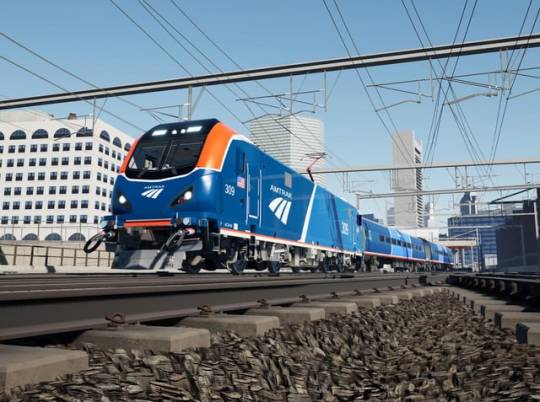
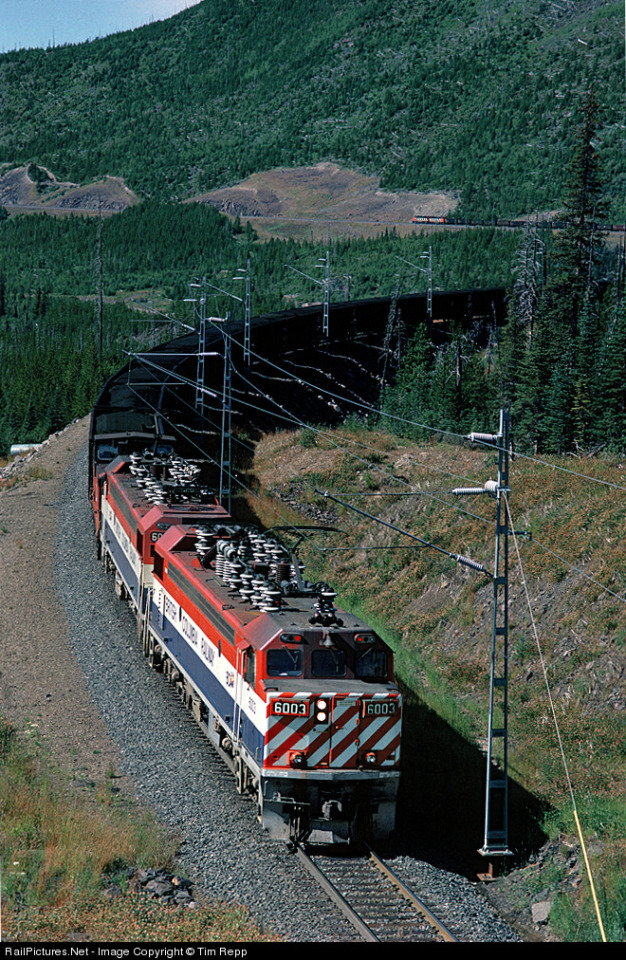
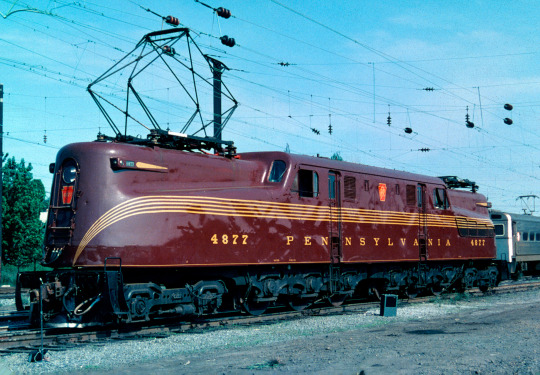

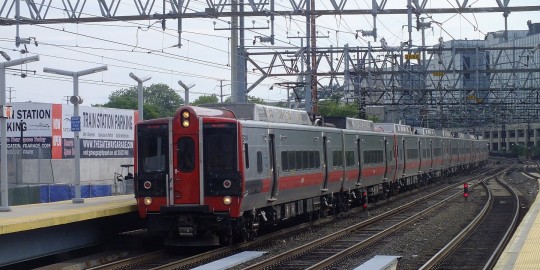
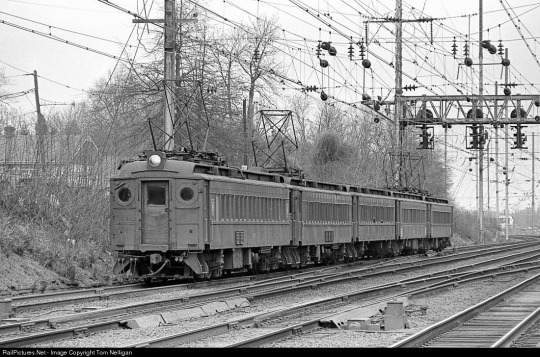

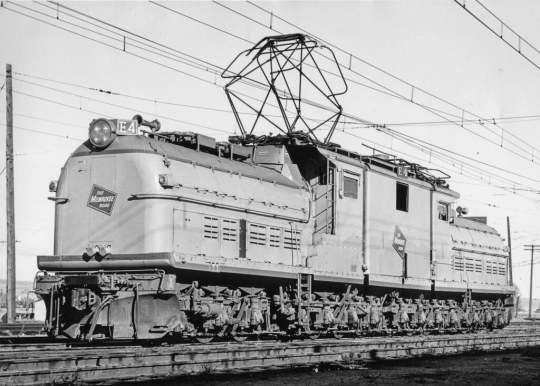

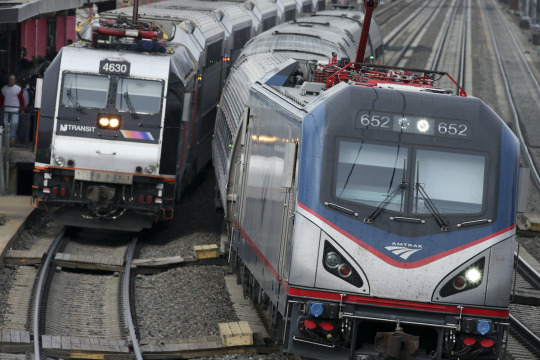
#trainposting#amtrak#electric traction#mta metro north#northeast corridor#pennsylvania railroad#railway electrification#electrified railroads#asks#milwaukee road#south shore railroad#sound transit#pantograph
22 notes
·
View notes
Photo
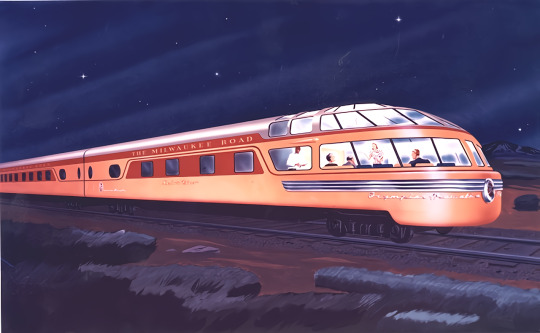



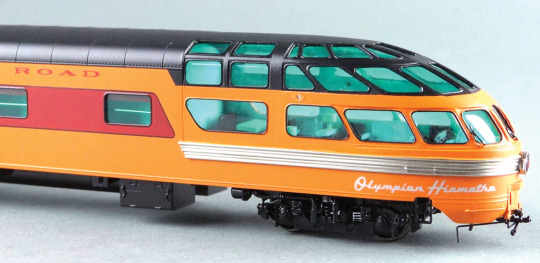


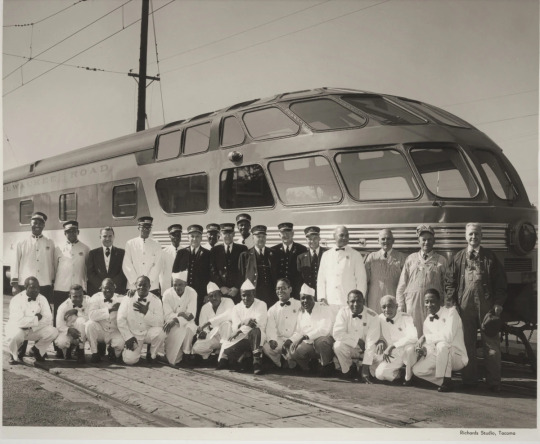

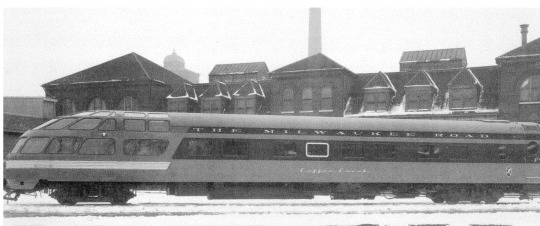
Milwaukee Road “Skytop” lounge-sleeper cars, 1948
In early 1948 the Chicago, Milwaukee, St. Paul and Pacific Railroad built four “Rapids” series lounge-parlor-observation cars in their home shops for their “Morning Hiawatha” and “Afternoon Hiawatha” passenger services, daytime trains that ran twice-daily through the Great Lakes region. Dubbed “Skytops”, these cars were designed by famed industrial designer Brooks Stevens, whose accomplishments vary from trains and automobiles to home appliances and even the original Wienermobile. These "Skytops” featured a radical design, with their tail-end an elongated quarter-sphere with a bullet-tip floor plan in a complex curvature made up of flat sections joined like a polyhedron. The cars’ tails were 90% glass and featured flat panels of glass only, no curved glass at all in their construction. The four “Rapids” series cars, which each boasted a name ending in “Rapids”, were parlor cars, with comfortable single seats which swiveled, rather than benches as in Coach, offered at First-class rates.
In late 1948 Milwaukee Road outsourced to the Pullman Company the construction of six “Skytops” for use on their long-distance “Olympian Hiawatha” service which ran between Chicago, Illinois and Seattle, Washington. Dubbed “Creek” series, with names all ending in the word “Creek”, these “Skytops”, delivered between December 1948 and January 1949, were lounge-sleeping cars rather than lounge-parlors, and featured eight bedrooms, sleeping sixteen, in the forward majority of the car, each with private toilet, plus a public toilet at the head of the car, and an enlarged lounge area seating twenty at the tail-end. Visually similar to the “Rapids” series cars in exterior, the “Creek” series lounge-sleepers had an extra bay of windows and skylights forward of the main tail section, and a different arrangement of windows along the sides of the car forward of the lounge.
During its existence the “Olympian Hiawatha” saw stiff competition from several rival trains along the same route, and the Milwaukee Road Company created bold, stylish passenger cars such as the “Skytops” and “Super Domes” in hopes of giving their service an edge. However, the 1950s saw the creation of the US Interstate Highway System and the subsequent diminishing of the railroads at the hands of an automobile boom, and with diminishing ridership and mounting losses the Milwaukee Road cancelled the “Olympian Hiawatha” in 1961. After this the six “Creek” series cars were sold to Canadian National, and served on various trains throughout the 1960s and early seventies. The cars, which had exits only at their forward ends, saw the end of service when new safety laws decreed all passenger cars in service must have at least two exits, and an exit at each end. After this Canadian National scrapped three of the cars and sold the rest to US interests. One car “Coffee Creek”, is currently under restoration, and the last two, “Gold Creek” and “Arrow Creek”, are stored as cut-up hulks at the Milwaukee Road Heritage Center.
Photos:
Image one is original concept art for the Skytop sleeper, painted by Brooks Stevens.
Image 3 is an edit of Image 2 which I personally did.
Image 4′s source is here
Image 5 is a model of the car.
Images 6–10 are historical photos from various sources.
20 notes
·
View notes
